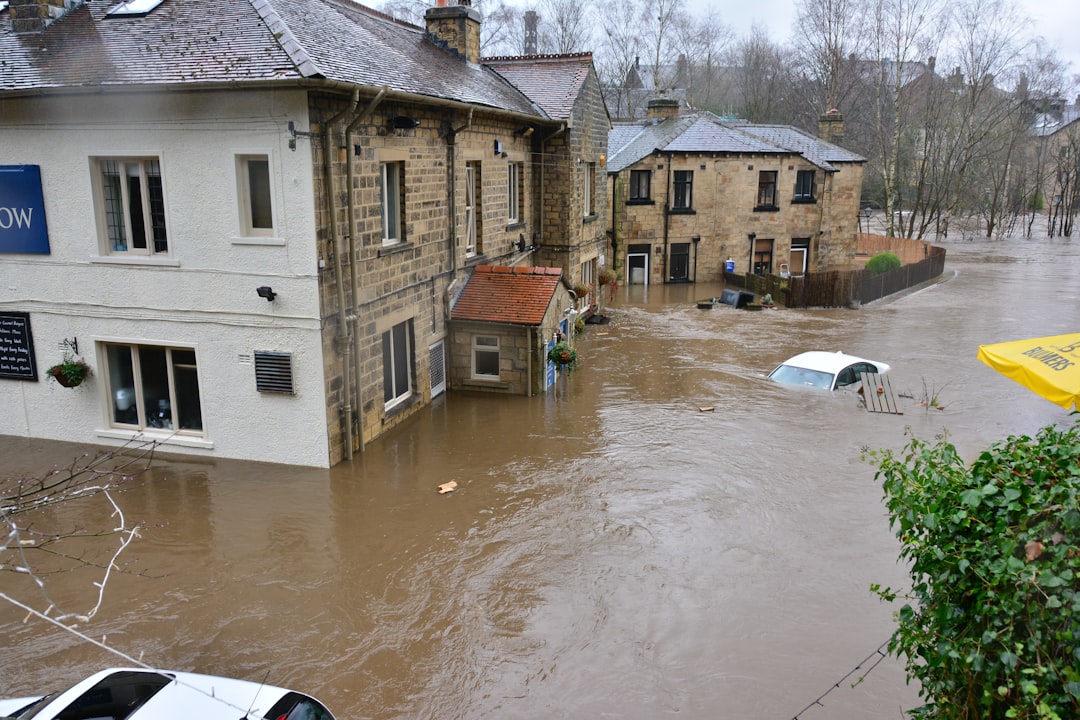 Photo from Unsplash
Photo from Unsplash
Originally Posted On: https://armoredbasement.com/the-experts-guide-to-preventing-basement-flooding/
The average cost for repairing a home with flood damage is estimated to cost at least $10,000. The price depends upon what type of damage you have and where the water came from.
A home’s basement is one of the areas that are most vulnerable to flooding. There are a variety of reasons why a basement can flood, such as a bad storm or a malfunctioning water heater. However, if you’re wondering how to prevent basement flooding, there are a few things you can do.
This guide will discuss our top tips on how to waterproof your basement and prevent flooding.
Prepare Your Landscaping
Take a look at your yard around your home. If the lawn slopes or grades toward the house, that can potentially put your basement at risk. Your lawn should slope away from your home, not toward it.
The water has to go somewhere when it rains. You want your lawn to be sloped so the rainwater flows toward city gutters and streets and away from your home.
If you notice that your lawn does slope toward your walls, there are a few landscaping options you can do to remedy this issue. What’s great about adjusting your landscaping is that you can get creative with the solution to your problem.
Some landscaping options include:
- Rain gutters
- Green roof
- Diverting rain spouts
- Heavier mulch
If you lay down mulch in your flower beds, you need to keep a barrier of around six inches between the mulch and the walls of your home. This is necessary for homes not made from brick since they won’t be as durable.
When you install your downspouts, don’t connect them so they end right over the ground around your house. You want the water that comes out of the spout to run out farther away from the perimeter of your home. Direct the water toward grassy areas that slope away from your house.
Repair Foundation Cracks
If you notice any new cracks in your basement walls, you need to get them fixed. The cracks will only get bigger and can result in your basement flooding.
You can repair the cracks yourself by purchasing an epoxy injection kit from your local hardware store. However, it’s recommended to hire an experienced foundation repair company to patch the cracks for you.
Install A Sump Pump
A sump pump helps keep your basement dry. It’s a great tool to combat flooding, water damage, and mold. When a sump pump fails, it can likely result in basement flooding.
If you have a sump pump already installed, you need to perform routine maintenance on it. When you start preparing for a storm, check that your sump pump is plugged in and functioning properly. You can also invest in a generator to hook your sump pump up in case the power goes out.
Cover Your Basement Windows
Windows that are below grade can result in water pooling in the recesses surrounding them. The window well drain can also get clogged with debris and leaves. As a result, the water pressure can cause cracks and leaks.
The best way to fix this is a window-well cover. They’re plastic bubbles that are designed to protect your drain from overflowing or clogging.
Inspect Your Sewer Systems
Cleaning out your floor drain and tank is an important part of preventing basement water damage. Your drainage systems can clog if not cleaned out regularly. A clogged drainage system can cause a massive mess inside of your home.
One way to prevent a backup is monitoring what you and your family flush down the toilet. Human waste and biodegradable toilet paper are the only things that should get flushed. Here are some things that shouldn’t be flushed:
- Paper towels
- Baby wipes
- Trash
- Feminine hygiene products
Even if it says on the packaging that the item is flushable, they can likely lead to clogs over time.
Properly Water Your Lawn
Maintaining your lawn is important when keeping the exterior of your home looking fresh and green. However, not many homeowners realize that watering your lawn too much can result in problems in their basements. Make sure you’re watering your lawn, plants, and flowers the appropriate amount.
Another item that can contribute to basement flooding is where your sprinklers are placed. When you turn your sprinklers on, the water shouldn’t hit the foundation of your home. Reposition the sprinklers so they don’t spray water onto your house.
What To Do If Your Basement Starts Flooding
If your basement becomes flooded, you need to stay safe. A flooded basement can potentially be a serious safety and health risk.
Don’t go down into a flooded basement if possible. Standing water in your basement can sometimes have harmful bacteria in it. You should also be sure you don’t touch electrical fixtures or wiring.
If you need to go down to the basement, wear a pair of waterproof rubber boots. Pump the water out of your basement as soon as possible.
Next, you’ll want to figure out what caused your basement to flood in the first place. Sometimes the source of the flooding is obvious, like a burst water pipe. In other scenarios, water might be seeping into the basement from different areas.
Once the water has been pumped out, you’ll want to remove all water-damaged items. You might need some drywall and foundation repair work done.
Then, you’ll want to have a basement waterproofing system installed. This system can help prevent future floods from occurring.
Learn How To Prevent Basement Flooding
Knowing how to prevent basement flooding before it happens is necessary to stop home water damage from occurring. While flooding can still happen, you want to do everything in your power as a homeowner to reduce your risk of flooding.
Contact us to learn more about our basement waterproofing and foundation crack repair services.

